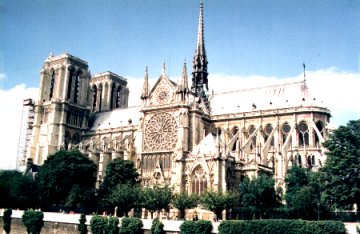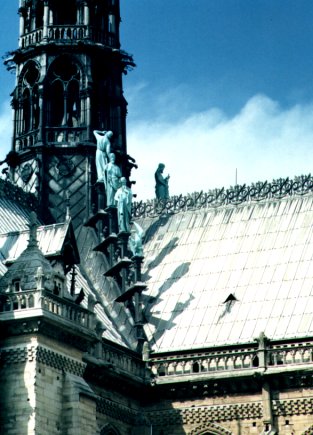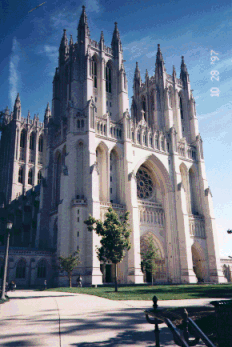Educating a Mason
Today, we meet a medieval mason. The University of Houston's College of Engineering presents this series about the machines that make our civilization run, and the people whose ingenuity created them.
It's hard to say too much about Gothic cathedrals. They combined incredible size with a delicacy of balance and detail that has to be seen to be believed. The spire of Strasbourg Cathedral, for example, is almost as high as the Washington Monument.
Gothic architecture suddenly appeared in the middle of the 12th century. It kept evolving for 250 years, and then it abruptly stopped developing toward the end of the 14th century.
The people who created this art appear to have been largely uneducated. Only 40 percent of the master masons could even write their name on a document. They probably knew nothing of formal geometry, and it's unlikely they made any calculations.
The medieval cathedral builder learned his empirical art -- his empirical science -- through apprenticeship. The master builder had all kinds of tricks of the trade at his disposal -- many of them jealously guarded. These tricks amounted to a vast inventory of knowledge of material selection, personnel management, geometrical proportioning, load distribution, architectural design, and a firm sense of liturgy and Christian tradition.
And make no mistake, these men saw no clear boundary between things material and things spiritual. Their art flowed from their right brain. It was visual and spatial. They levitated tons of stone into the air to communicate their praise of God, and when they were finished, they embellished the nooks and crannies and high aeries of their buildings with the phantoms of their minds -- with cherubs and gargoyles and wild caricatures of one another.
They also signed their work, boldly and proudly. An inscription, 25 feet long, on the south transept of Notre-Dame Cathedral says:
Master Jean de Chelles commenced this work for the Glory of the Mother of Christ on the second of the Ides of ... February, 1258.
So what became of this marvelous art? The best guess is that it died when the master builder became an educated gentleman -- when he moved into an office and managed the work of others at a distance. At that point the kind of hands-on creativity that had driven it so powerfully dried up.
Still, this art has recently been recreated here in the United States. The National Cathedral in Washington, D.C., was built with great fidelity to both the style and the working esprit of the medieval art. This huge structure is finally being finished after 82 years of work, and it's breathtaking. If you're ever there, don't miss the chance to see it.
I'm John Lienhard, at the University of Houston, where we're interested in the way inventive minds work.
(Theme music)
For more on the medieval mason, see Episode 528. For more on medieval cathedrals see Episodes 228, 439, and 825.
This episode has been greatly revised as Episode 1530.

(Photo by John Lienhard)
Typical Medieval Gargoyle (from the Sainte-Chapelle, Paris)


(Photos by John Lienhard)
Notre-Dame Cathedral, Paris and a detail of Angel Musicians on its Roof

(Photo by Judy Myers, with permission)
The West Entrance to the National Cathedral in Washington, DC
The image in the text is from Dictionnaire Raisonné de L'Architecture, MDCCCLXVIII, courtesy of the UH Art and Architecture library.